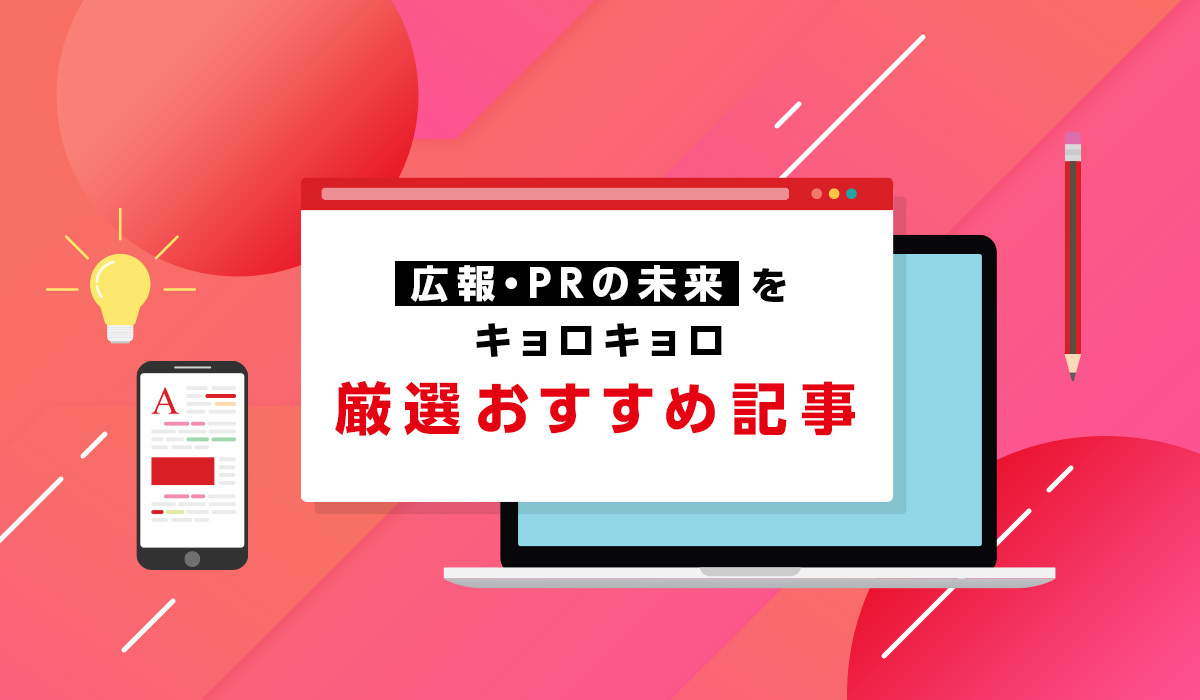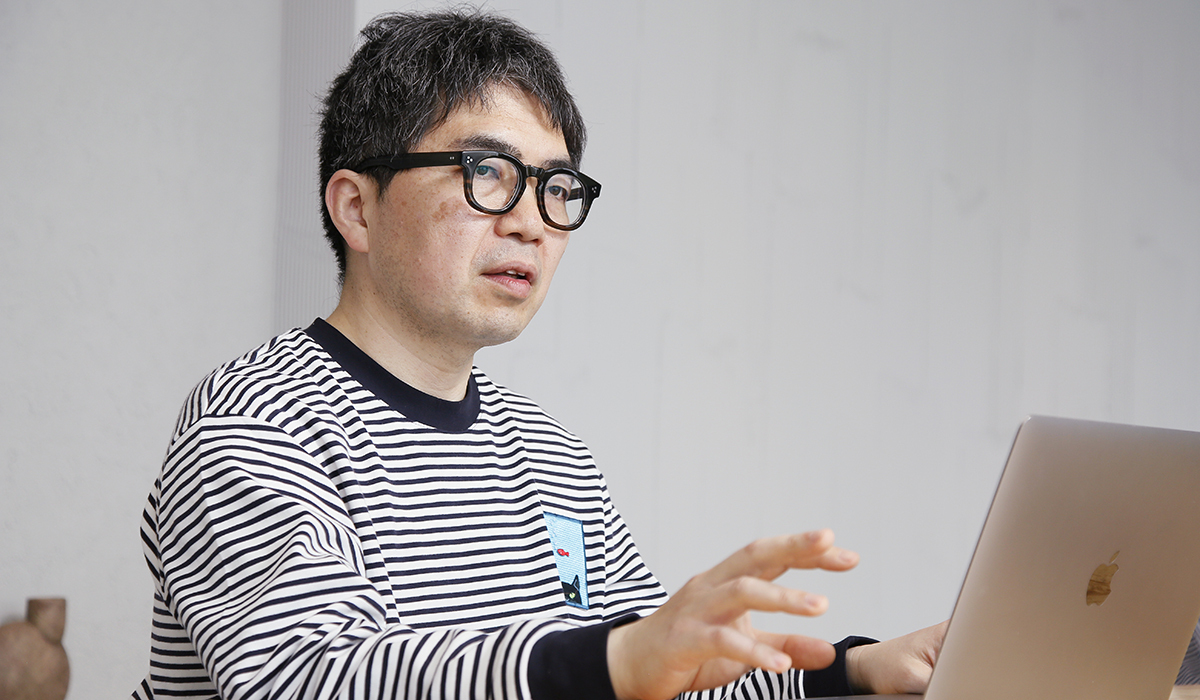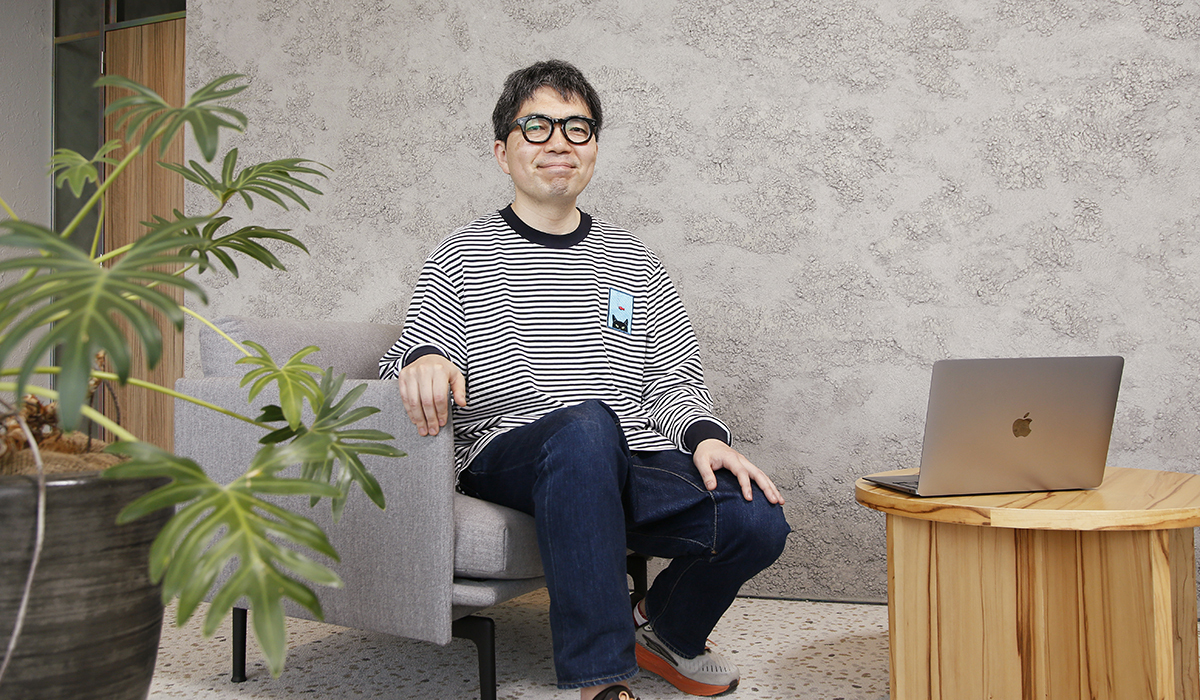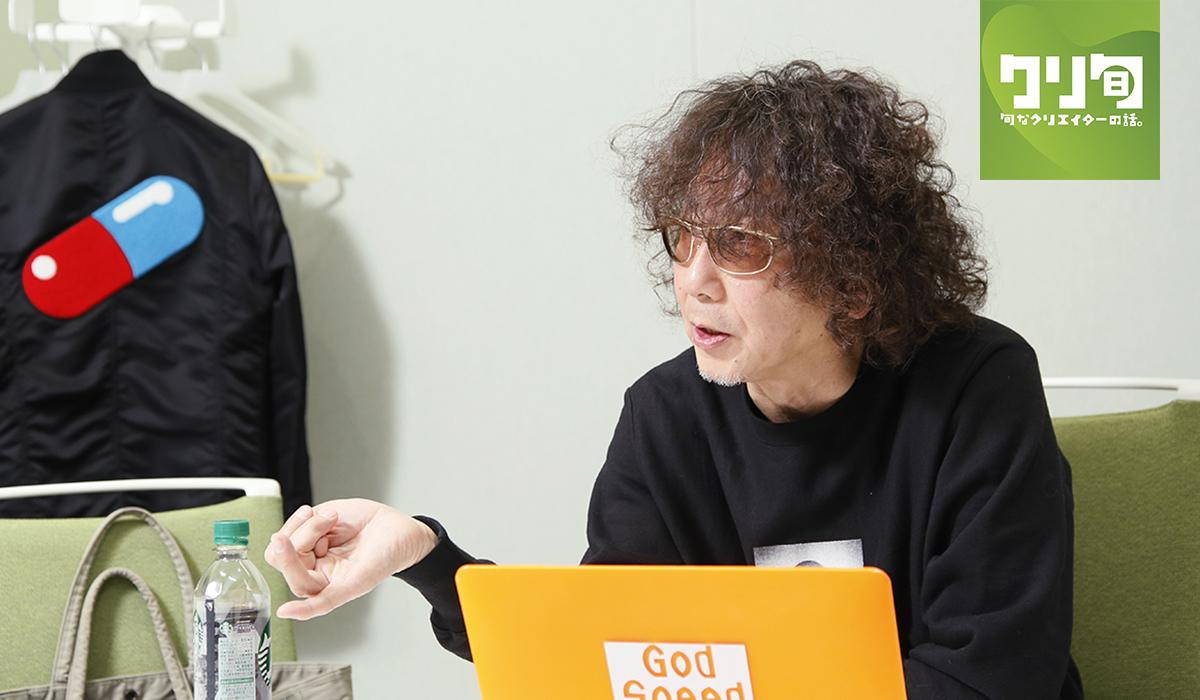スマートドライブが、デザインを経営の強力な機能として実装しているのはなぜか? スマートドライブ CDO(チーフ・デザイン・オフィサー) ロックウッド ガナーさん

AI、IoTなどの最新テクノロジーによって、モビリティ業界が100年に一度の変革期を迎えています。そんななか、「交通事故や渋滞のない社会」「移動がより効率的で快適な社会」を目指して、モビリティデータを活用したサービスを提供するスタートアップのスマートドライブ。
同社のCDO(チーフ・デザイン・オフィサー)であるロックウッド ガナーさんは、創業期からデザイナーとして在籍し、デザインによってビジネス開発に寄与しています。そんなガナーさんに、経営とデザインの関わり方やインハウスデザインの重要性、CDOの役割などについてお聞きします。
ガナーさんはアメリカ・カルフォルニア州出身。今回は、英語でご質問に答えていただきましたので、原文とともにお届けします。
同社のCDO(チーフ・デザイン・オフィサー)であるロックウッド ガナーさんは、創業期からデザイナーとして在籍し、デザインによってビジネス開発に寄与しています。そんなガナーさんに、経営とデザインの関わり方やインハウスデザインの重要性、CDOの役割などについてお聞きします。
ガナーさんはアメリカ・カルフォルニア州出身。今回は、英語でご質問に答えていただきましたので、原文とともにお届けします。
-What made you decide to become a designer?
As a teenager I made zines, and I studied art at university, focusing on computing in the arts and photography. While I was studying, people asked me to design various things for them, including education materials for NASA and album covers. I wanted to say yes to everything because everything was interesting. This kept happening and snowballed until I started working for a design agency. Eventually, I began working freelance for a number of years, then found myself in Japan. A friend I knew from the US introduced me to SmartDrive’s CEO, Kitagawa-san and he quickly became my favorite client. He had strong opinions and made smart decisions quickly, but also understood that you get the best work from designers when you give them room to move. That’s perfection, as far as I’m concerned. Our conversations were always fruitful and I always came away feeling like I had a million new ideas that I could present as options for supporting the company’s goals. Some of those goals included and still include reducing traffic fatalities and non-fatal accidents, so it was something to genuinely care about. SmartDrive has always had interesting challenges and possibilities in branding, data visualization, technology, business model creation, outreach, and more. So when I was asked to become an employee it was an immediate “yes.”
──デザイナーになろうと思ったきっかけは?
10代のころはZINE(ジン、個人が自主制作する冊子)をつくっていました。大学では芸術と写真を専門に学びました。在学中に、NASAの教材やアルバムのジャケットなど、いろいろなデザイン依頼を受けるようになりました。すべてが面白かったので、すべてにイエスと答えたかったのです。それが雪だるま式に増えていき、デザイン事務所で働くようになりました。その後、フリーランスで何年か仕事をしていましたが、気がついたら日本にいました。
アメリカで知り合った友人がスマートドライブのCEOである北川さんを紹介してくれ、すぐに私のお気に入りのクライアントになりました。彼は強い意見を持ち、素早く賢い決断を下します。同時にデザイナーに動く余地を与えることで、最高のクリエイティブができることを理解しています。これこそ、私の考えるパーフェクトな経営者です。
私たちの会話はいつも実り多く、北川さんと話をするたびに、私はスマートドライブが目指す世界を実現するためのアイデアが無限に湧いてくるような気持ちになりました。そのなかには、いまでも実現したい事柄の1つである、交通事故を減らすアイデアも含まれています。
スマートドライブは、ブランディングやデータの可視化、テクノロジー、ビジネスモデルの構築、福祉など、さまざまな角度から面白い挑戦をし続けています。だから、社員にならないかと誘われたときは、即座にイエスと答えました。

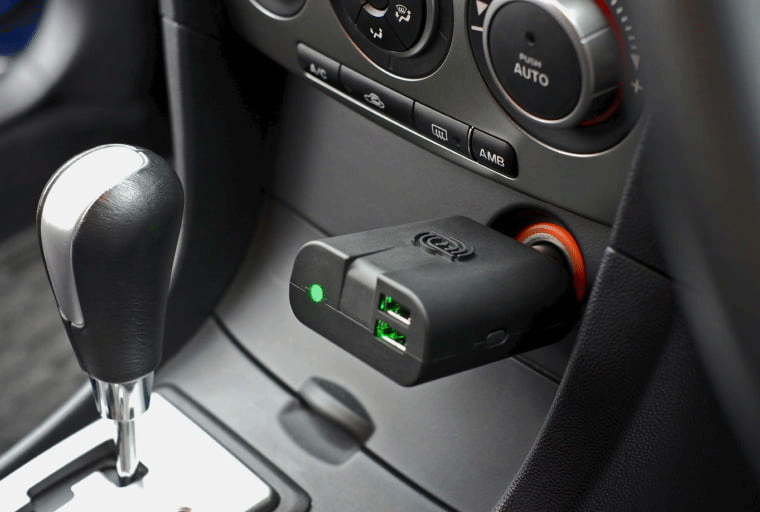 -What was your role at the time you joined SmartDrive?
-What was your role at the time you joined SmartDrive?
When I joined SmartDrive, I was the first employee at a brand new startup. When you find yourself in that position, you end up filling a lot of roles until more people join who can do them properly. But the focus of my role remains the same, which is to use design to support the goals of the company in the broadest sense. There are a lot of things inside that idea. I’m responsible for all the design output of the company as a whole, which includes shaping all visual aspects of our brand from the micro to the macro. I also help to steer UX, as well as try to establish and maintain an environment within the company that encourages design to both flourish and function at full capacity.
──入社してからどのような役割を担っていましたか?
スマートドライブに入社したとき、私は設立間もないスタートアップの「最初の社員」でした。そのため、会社の規模が大きくなるまでは、いろいろな役割をこなしていました。しかし、私の役割の焦点は変わりません。それは、「会社の目標をサポートするために、もっとも広い意味で、デザインの力を活用すること」です。その考えには、いろいろなものが含まれています。私は会社全体のアウトプットの責任者であり、それはあらゆるブランドビジュアルの全体から細部までが含まれています。また、UXの舵取り役でもあり、デザインの力をフル発揮できるように、社内環境を整え、維持するのも私の仕事です。
-I understand that you were the first employee of SmartDrive. I think this is an indication that Mr. Kitagawa, the president, also recognizes the need for design in management, but why do you think design is necessary for a start-up company?
Kitagawa-san understood that design was a highly valuable tool from the beginning. He was only 25, but I didn’t need to teach him anything at all. At the same time, I think there was an organic development based on needs. “I need an investor deck and a website.” “Okay, so we need a visual brand, some messaging, some illustration, and UI design.” Design can contribute in all those areas, directly or indirectly helping to shape what the product will actually be. And that can be a part of influencing decisions about how to sell, what to develop, and why. So getting a handle on something that important would seem advantageous.
When tech startups are newly created, I think there’s often a fight to establish some sense of legitimacy and stability when being viewed by the outside world. It’s very possible to hire a single freelance designer or agency to create the brand that will do those things in a single, one-time project. However, eventually I think it’s always going to be really valuable to have a trusted partner who can stay with you through your various stages of growth, evolving the brand as the company evolves and giving your communication a consistent voice.
──ガナーさんは初の社員だった。これは、CEOの北川さんが経営におけるデザインの必要性を認識していることの表れだと思いますが、なぜスタートアップ企業にデザインが必要なのでしょうか?
北川さんは、最初からデザインが価値の高いツールであることを理解していました。彼はまだ25歳でしたが、私が教えることはなにもありませんでした。同時に、私たちには有機的なシナジーがあったと思います。「投資家説明用スライドとWebサイトが欲しい」、「よし、じゃあビジュアルブランドとメッセージ、イラスト、UIデザインが必要だ」といった具合です。デザインはあらゆる領域に貢献し、直接的または間接的に、プロダクトがどのようなものになるかを形づくる手助けをします。そしてそれは、「どのように売るのか」「なにを開発するのか」「なぜそうするのか」という意思決定にも影響します。ですから、デザインの重要性を認識していることは有利に働きます。
テック系スタートアップが新しく生まれるとき、新しい技術ゆえ、世の中から受け入れられるために、正当性や信頼性を確立するために奮闘することがあると思います。それらを実現するためのブランドを、フリーランスのデザイナーやエージェンシーに一度だけ依頼してつくってもらうことも可能です。しかし、最終的には、企業のさまざまな成長段階をともに歩み、企業の進化に合わせてブランドを進化させ、コミュニケーションに一貫性を持たせてくれる信頼できるパートナーの存在は、常に貴重だと思うのです。
-What exactly did you do in the early activity?
When I think back to how we got from the beginning concepts laid out by Kitagawa-san in his initial pitch decks to the very first iterations of product ideas, there was an absolute blur of activity.
There was already a strong foundation in place, which was centered around using driving data to reduce car accidents. But the actual product wasn’t fully conceptualized yet.
Very early on, Kitagawa-san shared his idea that we should use positive feedback wherever possible when communicating with drivers, so that has guided a lot of our efforts, including every iteration of the company logo.
We spent some time looking at some possible inputs, like driving location, routes, driving behavior, check-ins, and tons of others. Kitagawa-san explained a lot of potential business models, including some that were consumer-focused. We even talked about doing an in-car karaoke product! Of course we didn’t make that one, but it did lead to us talking about driver incentives and other ways to make the driving experience more enjoyable. Often, Kitagawa-san would share a business idea with me, we would talk about for a while, I would create some slides, wireframes, rough design, or prototypes, which would then get shared with users or business contacts for feedback. Kitagawa-san had a really aggressive meeting schedule with surprisingly senior people from famous companies. Some of them were coming to meet us in our Hongo office that was actually a one bedroom apartment, and coming back again for more discussions. As a result, I had the sense that we were onto something. There was a lot of thinking that tried to consider the whole user journey from start to finish and where that might take us in the future. The fun thing about that is, over the years I’ve had product managers come to me and say, “We need design for feature X.” Sometimes I’m able to show them something I designed a year ago that’s 90% ready to use. That’s a somewhat rare occurrence, but it’s always a laugh when it happens. I think that’s a testament to the effectiveness of involving designers in business discussions.
──そのために、ガナーさんは具体的にどのようなことをされていたのでしょうか?
北川さんが投資家向けのピッチ資料に描いたビジネスのコンセプトが実際のプロダクトのアイデアになるまでをいま振り返ると、まさに「あっという間」でした。
運転データを使って交通事故を減らすというしっかりとした事業構想はすでにあったのです。しかし、実際のプロダクトはまだ完全にはコンセプト化されていませんでした。
北川さんは初期のころから「ドライバーとのコミュニケーションには、可能な限りポジティブなフィードバックが必要だ」という考えを示しており、会社のロゴを含め、その考えに基づいてさまざまな取り組みを行っていました。
運転場所やルート、運転行動、チェックイン履歴など、さまざまなデータの活用を検討しました。北川さんは、コンシューマー向けのものも含め、さまざまなビジネスモデルの可能性を説明してくれました。車内カラオケのプロダクトをつくろう、などという話にもなりました。もちろん、それは実現しませんでしたが、そのアイデアがきっかけで、ドライブをより楽しくするための工夫の話にもつながりました。北川さんからアイデアをもらって、しばらく話をして、スライドやワイヤーフレーム、ラフデザイン、プロトタイプをつくり、それをユーザーや取引先に共有して、フィードバックをもらうことがよくありました。北川さんは、びっくりするような有名企業の方々とアグレッシブに打ち合わせをされていました。なかには、ワンルームの本郷オフィスまでなんども足を運んでくれる方もいらっしゃいました。その結果、「これはいける」という手ごたえを感じました。私たちはカスタマージャーニーの全体像やその先にあるいろいろなことを考えました。面白いのは、プロダクトマネージャーが私のところにやってきて、「○○の機能をデザインしてほしい」と言ってきたとき、実はその機能はすでに1年前に90%ぐらいの精度で出来上がっていたりすることがあります。これはまれな出来事ですが、そういうときにはいつも笑いが起こります。
この例は、ビジネス上の議論にデザイナーを参加させることの有効性を示すものだと思います。
-How did you build your design team after joining SmartDrive in 2014?
For the first few years, I was the only designer. There wasn’t a team at all. I designed everything from the logo to the web site to app UI, print materials, presentation materials, and even hardware enclosures. Assembling the team so far has been a mixture of good luck and scouting. I’ve both scouted people and been lucky to have people find us. I looked for people who can approach the work earnestly, humbly, thoughtfully, and move quickly. That describes our team pretty well, so I couldn’t be happier. In terms of my own contribution to building cohesion in the team, I think that in our case it might be the result of everyone knowing that I want them to succeed and seeing that I will put in the effort to help them achieve success. But team cohesion is a combination of everyone’s efforts.
──2014年にスマートドライブに入社してから、どのようにしてデザインチームをつくっていったのですか?
最初の数年間は、デザイナーは私1人で、チームはありませんでした。ロゴからWebサイト、アプリのUI、印刷物、プレゼン資料、そしてハードウェアのパッケージまで、すべて私がデザインしました。
現在のチームができたのは、幸運とスカウトの複合的な結果です。人材をスカウトすることもありましたが、自らスマートドライブを見つけて応募してくれる幸運にも恵まれました。私は、「真摯に、謙虚に、考え、そして迅速に仕事に取り組める人材」を探していました。私たちのチームは、まさにその通りなので、これほど嬉しいことはありません。
私がチームの結束力を高めることに貢献した点は、私がみんなの成功を望んでいることをみんなが知っていたこと。そして、私がみんなの成功のために努力することをみんなが見ていてくれたことの結果なのかもしれません。でも、チームの結束力は、みんなの努力の積み重ねによるものです。
-I understand that you all work remotely. What do you think is the key to successful remote team building?
I think that when you have trust in place, it doesn’t matter if you’re working in person or remotely. I firmly believe that you build your team by actually working together and establishing reputations as individuals, as a group of people, and as a company. There’s no trick or hack. You just have to approach other people with humility, curiosity, and welcome other perspectives. In the act of actually working together on time sensitive projects with real world consequences, I think that forces you to figure out how to work well together.
──チームメンバー全員がリモートで仕事をされているそうですね。リモートでのチームビルディングを成功させる秘訣はなんだと思いますか?
信頼関係ができていれば、対面でもリモートでも関係ないと思います。個人としても、仲間としても、そして会社としても、実際に一緒に働き評判を確立することでチームはできていくと、私は固く信じています。トリックもハックもありません。ただ、謙虚に、好奇心を持って、ほかの人の意見を受け入れながら、人と接すればいいのです。一刻を争うようなプロジェクトを一緒に手がけると、どうすればうまくいくかを考えざるを得なくなるのだと思います。
-What do you feel is the importance of having an in-house design organization?
It’s probably the same as with any other part of an organization. If it’s done effectively, you have a team of people who actually care about what happens when people see or use their work. They are more connected to their work and they have an opportunity to improve the work later on. An in-house team that’s a valued part of the company will know the company well, understand what the goals are, and align with them to push the company forward. There’s no discovery process or if there is, it’s only about truly new things. You can nurture the development of that team and get consistent, reliable output.
──社内にデザイン組織を持つことの重要性をどのように感じていますか?
デザイン組織に限った話ではありません。自分たちのプロダクトを一番気にかけている人たちがチームとなって関わることが効果的です。社内にデザイン組織があるからこそ、仕事との結びつきが強くなり、のちに仕事を改善する機会にも恵まれるのです。会社の一員である社内チームは、会社のことをよく知り、目標を理解し、それに沿って会社を前進させることができます。デザイン組織が外部にあると、発見のプロセスがないか、あっても本当に新しいものについてのみになってしまいます。社内のデザイン組織は、チームの成長を育み、首尾一貫していて精度の高いアウトプットを生むことができるのです。
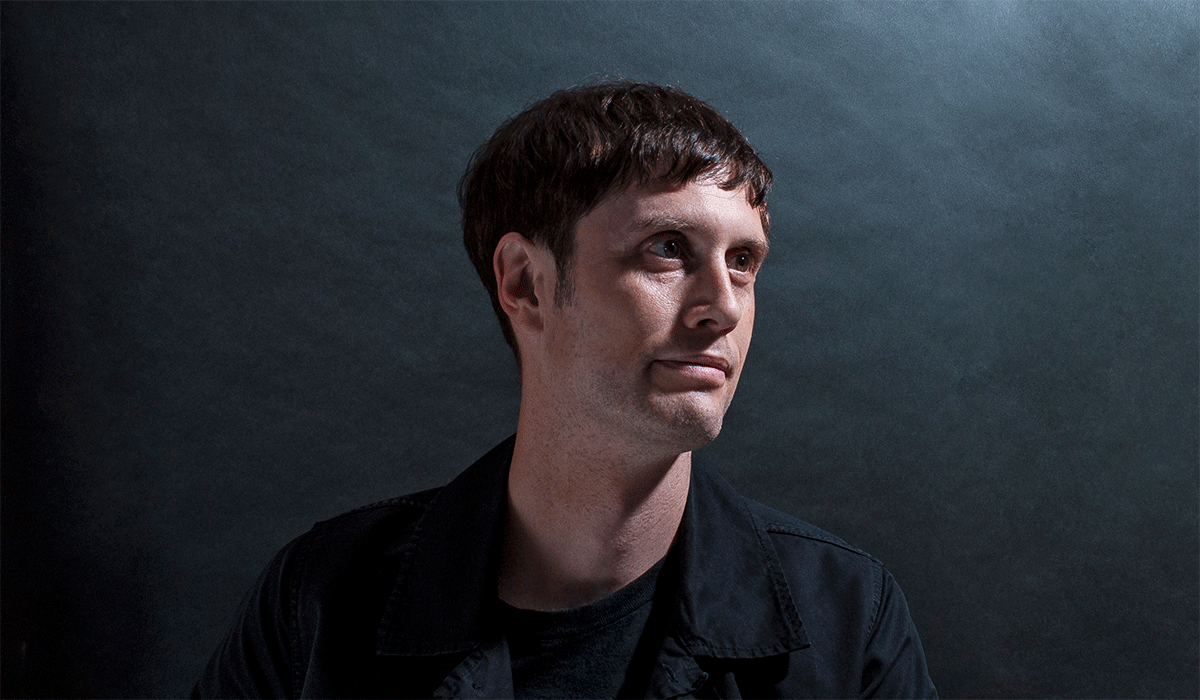 -When did you become CDO (Chief Design Officer)?
-When did you become CDO (Chief Design Officer)?
We tried a few titles in the beginning, but settled on CDO, I guess around 2016. Early on, we saw concrete returns on design investment with things like partners choosing us because they liked our website, or people selecting our services because the design was easier to use and more pleasant to look at than some competitor solutions. I think there was an obvious need to maintain whatever we had achieved in design and continue to use it to grow the company, so it made sense to have a role for design at the C level. That allows the design part of the company to exist not as a child of another part of the company, but as an equal contributor.
──CDO(チーフ・デザイン・オフィサー)になられたのはいつですか?
いくつかの肩書きを試しましたが、CDOに落ち着いたのは、2016年でしょうか。初めのころ、「Webサイトが気に入ったからパートナーに選んでもらった」「競合他社のソリューションよりもデザインが使いやすく、見栄えが良かったから、サービスを選んでもらった」など、デザインへの投資が具体的な利益につながっている反応を得られました。このようにデザインによって得たものを維持し、会社の成長に活かしていくことは当然必要なことです。デザイナーに役員レベルの役割を持たせることは理にかなっていると思います。そうすることで、デザイン部門は会社の他部門の一機能としてではなく、対等な貢献者として存在することができるのです。
-What do you think is the role of the CDO in this context?
A CDO is a partner who uses design expressly to help achieve business goals.
I think I’m like a creative director who cares about things beyond what might strictly be defined as “design.” I do a lot of design myself, but I also care about the success of the business more broadly so I use my position to try to initiate or support the internal and external relationships and processes that get us to where we want to be. I think you don’t absolutely have to call the person who does that kind of work a CDO, but that’s what we call it.
SmartDrive is in a position where we have a very wide range of design needs, so if there is a design department, then it will naturally interact with several other departments. It won’t be a child of marketing or a child of engineering, for example. We work with those departments and we support them. We are in conversation with them, exchanging ideas and working towards the same goals. We grow together as equal partners.
──そのなかで、CDOの役割はなんだと思いますか?
CDOは、「デザインという表現方法を用いて、ビジネスゴールの達成を支援するパートナー」です。
デザインという枠を超えた、クリエイティブディレクターのような存在だと思っています。私自身、多くのデザインを手がけていますが、ビジネスの成功にも関心があります。そのため、自分の立場を利用して、私たちが望む場所に到達するために、社内外の人間関係やプロセスをつくり出したり、サポートしたりしています。このような仕事をする人を必ずCDOと呼ぶ必要はないと思いますが、私たちはそのように呼んでいます。
スマートドライブには広範囲のデザインニーズがあります。そのため、デザイン部門があれば、自然とほかの部門と関わりを持つことになります。例えば、マーケティングやエンジニア部門の傘下ということにはならないでしょう。私たちは、そのような部門と一緒に仕事をし、サポートします。そして、彼らと会話をし、アイデアを交換し、同じ目標に向かって努力します。私たちは、対等なパートナーとして共に成長していくのです。
-What is your mission and job description as CDO?
In addition to the previous answer about my role, I generate systems that try to reduce redundancy in our work, such as creating a design system for our UI’s. I also directly work with the other designers to try to keep their careers moving in a direction that matches their goals. In that sense, I’m less of a manager and more of a facilitator.
I also see design as one of the ways we can directly advocate for users, but not the only way. I think that enough user advocacy has been put forward by the design community as a whole that it has reached a lot of areas of business and development, so we don’t need to fight for users anymore. Everyone understands that we need to keep users/customers in mind at every stage, so just about everyone has something to contribute to UX. That’s a wonderful situation to be in. At the same time, I think that things like usability are uniquely the responsibility of designers. I hope to take this concept a little further, however. It’s more than just, “What’s an easy way to do this thing?” In many cases, our services are being introduced to workplaces where no such service was previously used. We’re asking people to add new tasks to their already busy and demanding jobs or we’re asking people to do things they’ve been doing but in a different way. So how do we do that in a way that feels inviting and actually saves time? And how can we accommodate people who use the information at different levels of detail and at dramatically different literacy levels? Can we automate this in some way? There’s some degree of overlap with product level thinking, so it includes larger ideas beyond the details.
When we do this well, we’re making our products easier to sell and making our customers happy.
──CDOとしての使命と仕事内容を教えてください。
先ほどの役割の回答に加え、デザインマニュアルをつくるなど、仕事の重複を減らすための業務システムの確立を目指しています。また、チームメンバーが目指すキャリアの方向性と業務がマッチするように努めています。そういう意味では、マネージャーというより、ファシリテーターなのかもしれません。
また、デザインはユーザーを直接的に支援する方法のひとつであり、唯一の方法ではないと考えています。ユーザーアドボカシー(ユーザー視点でプロダクトを設計すること)は社内に浸透しています。社員の誰もが、ユーザーを意識する必要があることを理解しているので、ほぼ全員がUXに貢献できるなにかしらを持っているのです。これは素晴らしい状況だと思います。
一方で、ユーザビリティのようなものは、デザイナーにしかできないことだと思っています。しかし、私はこの考えをもう少し先に進めたいのです。「これを簡単にできる方法はないか」という発想だけではありません。私たちのサービスは、これまで利用されていなかった職場に導入されるケースが多いです。すでに忙しくて大変な仕事をしているのに、新しい業務が発生したり、今までやっていたことを別の方法で対応したりする必要があります。「どうすれば魅力的で、時間の節約になるのか?」 「情報の粒度やリテラシーレベルが大きく異なる人たちに、どうすれば受け入れられるのか?」「なんらかの方法で自動化できないか?」。これらの思考は、プロダクト開発レベルの思考とある程度重なるので、細部を超えた大きなアイデアも含まれています。
これがうまくいくと、プロダクトは売れやすくなり、お客さまに喜んでいただけるようになります。
-What do you think are the skills and mindsets that will be required of young creators aiming to become CDOs in the future?
I don’t think you should aim to be a CDO, at least not at first. I think you should aim to gain the most understanding and experience you can. Understand what design can and cannot do. Learn how to have conversations about design with different kinds of people, including people who know nothing about design or are even hostile to design. Defend design with solid, honest arguments. Seek help from and give help to other designers. Help various people with design in some way and try to track and quantify the impact of what you’ve done. If you do all those things, it’s likely that you will find opportunities to fill roles that feel right for you. In terms of the mindset, I think it’s humility, curiosity, and some healthy stubbornness.
──今後、CDOを目指す若いクリエイターに求められるスキルやマインドはどのようなものだと思いますか?
少なくとも最初はCDOを目指すべきではないと思います。できる限りの理解と経験を積むことを目標にしたほうがいいと思います。デザインにできること、できないことを理解しましょう。デザインについてなにも知らない人、あるいはデザインを敵視している人を含む、さまざまな人たちとデザインについて会話をする方法を学びましょう。堅実で正直な議論によってデザインを擁護しましょう。ほかのデザイナーに助けを求めたり、与えたりしましょう。デザインの力でさまざまな人を手助けし、自分が行ったことの影響を追跡し、定量化しましょう。そうすることで、自分に合った役割が見つかるはずです。マインドセットとしては、謙虚さ、好奇心、そして健全な頑固さが必要だと思います。
-What advice would you give to young creators?
Try as many areas of design as possible and see what feels like a good fit for you. But always bring design fundamentals to each task.
I’ve seen many lists of skills that designers need and some are pretty reasonable. You may be left with the impression that you need all of the skills listed. You don’t. Learn how to work with other people effectively. Learn how to use design to focus on what’s most important. Learn how to say, “no.” Learn how to respond when people tell you “no.” Learn how to ask good questions. Learn how to balance having enough confidence to take on tasks and try crazy things while having the humility to change your work when necessary. See other designers as colleagues and not competition. Feedback is an opportunity to improve the work you’ve done. Not everyone knows how to give useful feedback, so be patient with people and guide them toward giving you feedback you can act on.
──若いクリエイターにアドバイスをお願いします。
できるだけ多くの分野のデザインに挑戦し、自分に合うと思うものを見つけてください。でも、どんな仕事でもデザインの基本を忘れずに。
デザイナーに必要なスキルセットをたくさん見てきましたが、かなり合理的なものもあります。リストアップされたスキルのすべてが必要であるような印象を受けるかもしれません。しかし、そうではありません。ほかの人と効果的に仕事をする方法を学んでください。最も重要なことに集中するためのデザインの方法を学ぶ。ノーの言い方を学ぶ。ノーと言われたときの対処法を学ぶ。良い質問の仕方を学ぶ。仕事を引き受ける自信と、おかしなことに挑戦する自信、そして必要に応じて仕事を変える謙虚さのバランスの取り方を学ぶ。ほかのデザイナーを競争相手ではなく、同僚として見ること。フィードバックは、あなたが行った仕事を改善するための機会です。誰もが有益なフィードバックをする方法を知っているわけでありません。忍耐強く人と接し、あなたが行動できるようなフィードバックをもらえるように導いてください。
-Please tell us what you would like to accomplish with SmartDrive as CDO in the future.
I would like to be able to say that SmartDrive design has been a part of saving X number of lives in 202X. It may not be possible to give a number, but I would like that very much!
──最後に、CDOとしてスマートドライブで実現したいことをお聞かせください。
私は、「数年のうちに、スマートドライブの設計が●人の命を救うのに役立った」と言えるようになりたいです。数字で示すことはできないかもしれませんが、ぜひそうしたいですね。
──この取材のために、スマートドライブの社員の方にガナーさんについてヒアリングしたところ、「デザイナーとして優秀」「チームビルディングがすごい」「人間性が素晴らしい」という声がありました。原点は、今回ガナーさんからのアドバイスにあるのかもしれません。「デザインを敵視している人を含む、さまざまな人たちとデザインについて会話をする方法を学ぶ」「謙虚さ、好奇心、そして健全な頑固さが必要」「ノーの言い方を学ぶ」「ノーと言われたときの対処法を学ぶ」「ほかの人と効果的に仕事をする方法を学ぶ」……。デザイナーとしての心構えが大切だと思いました!

As a teenager I made zines, and I studied art at university, focusing on computing in the arts and photography. While I was studying, people asked me to design various things for them, including education materials for NASA and album covers. I wanted to say yes to everything because everything was interesting. This kept happening and snowballed until I started working for a design agency. Eventually, I began working freelance for a number of years, then found myself in Japan. A friend I knew from the US introduced me to SmartDrive’s CEO, Kitagawa-san and he quickly became my favorite client. He had strong opinions and made smart decisions quickly, but also understood that you get the best work from designers when you give them room to move. That’s perfection, as far as I’m concerned. Our conversations were always fruitful and I always came away feeling like I had a million new ideas that I could present as options for supporting the company’s goals. Some of those goals included and still include reducing traffic fatalities and non-fatal accidents, so it was something to genuinely care about. SmartDrive has always had interesting challenges and possibilities in branding, data visualization, technology, business model creation, outreach, and more. So when I was asked to become an employee it was an immediate “yes.”
──デザイナーになろうと思ったきっかけは?
10代のころはZINE(ジン、個人が自主制作する冊子)をつくっていました。大学では芸術と写真を専門に学びました。在学中に、NASAの教材やアルバムのジャケットなど、いろいろなデザイン依頼を受けるようになりました。すべてが面白かったので、すべてにイエスと答えたかったのです。それが雪だるま式に増えていき、デザイン事務所で働くようになりました。その後、フリーランスで何年か仕事をしていましたが、気がついたら日本にいました。
アメリカで知り合った友人がスマートドライブのCEOである北川さんを紹介してくれ、すぐに私のお気に入りのクライアントになりました。彼は強い意見を持ち、素早く賢い決断を下します。同時にデザイナーに動く余地を与えることで、最高のクリエイティブができることを理解しています。これこそ、私の考えるパーフェクトな経営者です。
私たちの会話はいつも実り多く、北川さんと話をするたびに、私はスマートドライブが目指す世界を実現するためのアイデアが無限に湧いてくるような気持ちになりました。そのなかには、いまでも実現したい事柄の1つである、交通事故を減らすアイデアも含まれています。
スマートドライブは、ブランディングやデータの可視化、テクノロジー、ビジネスモデルの構築、福祉など、さまざまな角度から面白い挑戦をし続けています。だから、社員にならないかと誘われたときは、即座にイエスと答えました。

スマートドライブの車両管理システム。自動収集した走行データを「リアルタイム位置情報」「走行履歴」「安全運転診断」「運転日報・月報」など、ビジネスシーンに合わせて活用できる

シガーソケットに挿すだけで走行データを自動収集できるデバイスも
When I joined SmartDrive, I was the first employee at a brand new startup. When you find yourself in that position, you end up filling a lot of roles until more people join who can do them properly. But the focus of my role remains the same, which is to use design to support the goals of the company in the broadest sense. There are a lot of things inside that idea. I’m responsible for all the design output of the company as a whole, which includes shaping all visual aspects of our brand from the micro to the macro. I also help to steer UX, as well as try to establish and maintain an environment within the company that encourages design to both flourish and function at full capacity.
──入社してからどのような役割を担っていましたか?
スマートドライブに入社したとき、私は設立間もないスタートアップの「最初の社員」でした。そのため、会社の規模が大きくなるまでは、いろいろな役割をこなしていました。しかし、私の役割の焦点は変わりません。それは、「会社の目標をサポートするために、もっとも広い意味で、デザインの力を活用すること」です。その考えには、いろいろなものが含まれています。私は会社全体のアウトプットの責任者であり、それはあらゆるブランドビジュアルの全体から細部までが含まれています。また、UXの舵取り役でもあり、デザインの力をフル発揮できるように、社内環境を整え、維持するのも私の仕事です。
-I understand that you were the first employee of SmartDrive. I think this is an indication that Mr. Kitagawa, the president, also recognizes the need for design in management, but why do you think design is necessary for a start-up company?
Kitagawa-san understood that design was a highly valuable tool from the beginning. He was only 25, but I didn’t need to teach him anything at all. At the same time, I think there was an organic development based on needs. “I need an investor deck and a website.” “Okay, so we need a visual brand, some messaging, some illustration, and UI design.” Design can contribute in all those areas, directly or indirectly helping to shape what the product will actually be. And that can be a part of influencing decisions about how to sell, what to develop, and why. So getting a handle on something that important would seem advantageous.
When tech startups are newly created, I think there’s often a fight to establish some sense of legitimacy and stability when being viewed by the outside world. It’s very possible to hire a single freelance designer or agency to create the brand that will do those things in a single, one-time project. However, eventually I think it’s always going to be really valuable to have a trusted partner who can stay with you through your various stages of growth, evolving the brand as the company evolves and giving your communication a consistent voice.
──ガナーさんは初の社員だった。これは、CEOの北川さんが経営におけるデザインの必要性を認識していることの表れだと思いますが、なぜスタートアップ企業にデザインが必要なのでしょうか?
北川さんは、最初からデザインが価値の高いツールであることを理解していました。彼はまだ25歳でしたが、私が教えることはなにもありませんでした。同時に、私たちには有機的なシナジーがあったと思います。「投資家説明用スライドとWebサイトが欲しい」、「よし、じゃあビジュアルブランドとメッセージ、イラスト、UIデザインが必要だ」といった具合です。デザインはあらゆる領域に貢献し、直接的または間接的に、プロダクトがどのようなものになるかを形づくる手助けをします。そしてそれは、「どのように売るのか」「なにを開発するのか」「なぜそうするのか」という意思決定にも影響します。ですから、デザインの重要性を認識していることは有利に働きます。
テック系スタートアップが新しく生まれるとき、新しい技術ゆえ、世の中から受け入れられるために、正当性や信頼性を確立するために奮闘することがあると思います。それらを実現するためのブランドを、フリーランスのデザイナーやエージェンシーに一度だけ依頼してつくってもらうことも可能です。しかし、最終的には、企業のさまざまな成長段階をともに歩み、企業の進化に合わせてブランドを進化させ、コミュニケーションに一貫性を持たせてくれる信頼できるパートナーの存在は、常に貴重だと思うのです。
-What exactly did you do in the early activity?
When I think back to how we got from the beginning concepts laid out by Kitagawa-san in his initial pitch decks to the very first iterations of product ideas, there was an absolute blur of activity.
There was already a strong foundation in place, which was centered around using driving data to reduce car accidents. But the actual product wasn’t fully conceptualized yet.
Very early on, Kitagawa-san shared his idea that we should use positive feedback wherever possible when communicating with drivers, so that has guided a lot of our efforts, including every iteration of the company logo.
We spent some time looking at some possible inputs, like driving location, routes, driving behavior, check-ins, and tons of others. Kitagawa-san explained a lot of potential business models, including some that were consumer-focused. We even talked about doing an in-car karaoke product! Of course we didn’t make that one, but it did lead to us talking about driver incentives and other ways to make the driving experience more enjoyable. Often, Kitagawa-san would share a business idea with me, we would talk about for a while, I would create some slides, wireframes, rough design, or prototypes, which would then get shared with users or business contacts for feedback. Kitagawa-san had a really aggressive meeting schedule with surprisingly senior people from famous companies. Some of them were coming to meet us in our Hongo office that was actually a one bedroom apartment, and coming back again for more discussions. As a result, I had the sense that we were onto something. There was a lot of thinking that tried to consider the whole user journey from start to finish and where that might take us in the future. The fun thing about that is, over the years I’ve had product managers come to me and say, “We need design for feature X.” Sometimes I’m able to show them something I designed a year ago that’s 90% ready to use. That’s a somewhat rare occurrence, but it’s always a laugh when it happens. I think that’s a testament to the effectiveness of involving designers in business discussions.
──そのために、ガナーさんは具体的にどのようなことをされていたのでしょうか?
北川さんが投資家向けのピッチ資料に描いたビジネスのコンセプトが実際のプロダクトのアイデアになるまでをいま振り返ると、まさに「あっという間」でした。
運転データを使って交通事故を減らすというしっかりとした事業構想はすでにあったのです。しかし、実際のプロダクトはまだ完全にはコンセプト化されていませんでした。
北川さんは初期のころから「ドライバーとのコミュニケーションには、可能な限りポジティブなフィードバックが必要だ」という考えを示しており、会社のロゴを含め、その考えに基づいてさまざまな取り組みを行っていました。
運転場所やルート、運転行動、チェックイン履歴など、さまざまなデータの活用を検討しました。北川さんは、コンシューマー向けのものも含め、さまざまなビジネスモデルの可能性を説明してくれました。車内カラオケのプロダクトをつくろう、などという話にもなりました。もちろん、それは実現しませんでしたが、そのアイデアがきっかけで、ドライブをより楽しくするための工夫の話にもつながりました。北川さんからアイデアをもらって、しばらく話をして、スライドやワイヤーフレーム、ラフデザイン、プロトタイプをつくり、それをユーザーや取引先に共有して、フィードバックをもらうことがよくありました。北川さんは、びっくりするような有名企業の方々とアグレッシブに打ち合わせをされていました。なかには、ワンルームの本郷オフィスまでなんども足を運んでくれる方もいらっしゃいました。その結果、「これはいける」という手ごたえを感じました。私たちはカスタマージャーニーの全体像やその先にあるいろいろなことを考えました。面白いのは、プロダクトマネージャーが私のところにやってきて、「○○の機能をデザインしてほしい」と言ってきたとき、実はその機能はすでに1年前に90%ぐらいの精度で出来上がっていたりすることがあります。これはまれな出来事ですが、そういうときにはいつも笑いが起こります。
この例は、ビジネス上の議論にデザイナーを参加させることの有効性を示すものだと思います。
-How did you build your design team after joining SmartDrive in 2014?
For the first few years, I was the only designer. There wasn’t a team at all. I designed everything from the logo to the web site to app UI, print materials, presentation materials, and even hardware enclosures. Assembling the team so far has been a mixture of good luck and scouting. I’ve both scouted people and been lucky to have people find us. I looked for people who can approach the work earnestly, humbly, thoughtfully, and move quickly. That describes our team pretty well, so I couldn’t be happier. In terms of my own contribution to building cohesion in the team, I think that in our case it might be the result of everyone knowing that I want them to succeed and seeing that I will put in the effort to help them achieve success. But team cohesion is a combination of everyone’s efforts.
──2014年にスマートドライブに入社してから、どのようにしてデザインチームをつくっていったのですか?
最初の数年間は、デザイナーは私1人で、チームはありませんでした。ロゴからWebサイト、アプリのUI、印刷物、プレゼン資料、そしてハードウェアのパッケージまで、すべて私がデザインしました。
現在のチームができたのは、幸運とスカウトの複合的な結果です。人材をスカウトすることもありましたが、自らスマートドライブを見つけて応募してくれる幸運にも恵まれました。私は、「真摯に、謙虚に、考え、そして迅速に仕事に取り組める人材」を探していました。私たちのチームは、まさにその通りなので、これほど嬉しいことはありません。
私がチームの結束力を高めることに貢献した点は、私がみんなの成功を望んでいることをみんなが知っていたこと。そして、私がみんなの成功のために努力することをみんなが見ていてくれたことの結果なのかもしれません。でも、チームの結束力は、みんなの努力の積み重ねによるものです。
-I understand that you all work remotely. What do you think is the key to successful remote team building?
I think that when you have trust in place, it doesn’t matter if you’re working in person or remotely. I firmly believe that you build your team by actually working together and establishing reputations as individuals, as a group of people, and as a company. There’s no trick or hack. You just have to approach other people with humility, curiosity, and welcome other perspectives. In the act of actually working together on time sensitive projects with real world consequences, I think that forces you to figure out how to work well together.
──チームメンバー全員がリモートで仕事をされているそうですね。リモートでのチームビルディングを成功させる秘訣はなんだと思いますか?
信頼関係ができていれば、対面でもリモートでも関係ないと思います。個人としても、仲間としても、そして会社としても、実際に一緒に働き評判を確立することでチームはできていくと、私は固く信じています。トリックもハックもありません。ただ、謙虚に、好奇心を持って、ほかの人の意見を受け入れながら、人と接すればいいのです。一刻を争うようなプロジェクトを一緒に手がけると、どうすればうまくいくかを考えざるを得なくなるのだと思います。
-What do you feel is the importance of having an in-house design organization?
It’s probably the same as with any other part of an organization. If it’s done effectively, you have a team of people who actually care about what happens when people see or use their work. They are more connected to their work and they have an opportunity to improve the work later on. An in-house team that’s a valued part of the company will know the company well, understand what the goals are, and align with them to push the company forward. There’s no discovery process or if there is, it’s only about truly new things. You can nurture the development of that team and get consistent, reliable output.
──社内にデザイン組織を持つことの重要性をどのように感じていますか?
デザイン組織に限った話ではありません。自分たちのプロダクトを一番気にかけている人たちがチームとなって関わることが効果的です。社内にデザイン組織があるからこそ、仕事との結びつきが強くなり、のちに仕事を改善する機会にも恵まれるのです。会社の一員である社内チームは、会社のことをよく知り、目標を理解し、それに沿って会社を前進させることができます。デザイン組織が外部にあると、発見のプロセスがないか、あっても本当に新しいものについてのみになってしまいます。社内のデザイン組織は、チームの成長を育み、首尾一貫していて精度の高いアウトプットを生むことができるのです。

We tried a few titles in the beginning, but settled on CDO, I guess around 2016. Early on, we saw concrete returns on design investment with things like partners choosing us because they liked our website, or people selecting our services because the design was easier to use and more pleasant to look at than some competitor solutions. I think there was an obvious need to maintain whatever we had achieved in design and continue to use it to grow the company, so it made sense to have a role for design at the C level. That allows the design part of the company to exist not as a child of another part of the company, but as an equal contributor.
──CDO(チーフ・デザイン・オフィサー)になられたのはいつですか?
いくつかの肩書きを試しましたが、CDOに落ち着いたのは、2016年でしょうか。初めのころ、「Webサイトが気に入ったからパートナーに選んでもらった」「競合他社のソリューションよりもデザインが使いやすく、見栄えが良かったから、サービスを選んでもらった」など、デザインへの投資が具体的な利益につながっている反応を得られました。このようにデザインによって得たものを維持し、会社の成長に活かしていくことは当然必要なことです。デザイナーに役員レベルの役割を持たせることは理にかなっていると思います。そうすることで、デザイン部門は会社の他部門の一機能としてではなく、対等な貢献者として存在することができるのです。
-What do you think is the role of the CDO in this context?
A CDO is a partner who uses design expressly to help achieve business goals.
I think I’m like a creative director who cares about things beyond what might strictly be defined as “design.” I do a lot of design myself, but I also care about the success of the business more broadly so I use my position to try to initiate or support the internal and external relationships and processes that get us to where we want to be. I think you don’t absolutely have to call the person who does that kind of work a CDO, but that’s what we call it.
SmartDrive is in a position where we have a very wide range of design needs, so if there is a design department, then it will naturally interact with several other departments. It won’t be a child of marketing or a child of engineering, for example. We work with those departments and we support them. We are in conversation with them, exchanging ideas and working towards the same goals. We grow together as equal partners.
──そのなかで、CDOの役割はなんだと思いますか?
CDOは、「デザインという表現方法を用いて、ビジネスゴールの達成を支援するパートナー」です。
デザインという枠を超えた、クリエイティブディレクターのような存在だと思っています。私自身、多くのデザインを手がけていますが、ビジネスの成功にも関心があります。そのため、自分の立場を利用して、私たちが望む場所に到達するために、社内外の人間関係やプロセスをつくり出したり、サポートしたりしています。このような仕事をする人を必ずCDOと呼ぶ必要はないと思いますが、私たちはそのように呼んでいます。
スマートドライブには広範囲のデザインニーズがあります。そのため、デザイン部門があれば、自然とほかの部門と関わりを持つことになります。例えば、マーケティングやエンジニア部門の傘下ということにはならないでしょう。私たちは、そのような部門と一緒に仕事をし、サポートします。そして、彼らと会話をし、アイデアを交換し、同じ目標に向かって努力します。私たちは、対等なパートナーとして共に成長していくのです。
-What is your mission and job description as CDO?
In addition to the previous answer about my role, I generate systems that try to reduce redundancy in our work, such as creating a design system for our UI’s. I also directly work with the other designers to try to keep their careers moving in a direction that matches their goals. In that sense, I’m less of a manager and more of a facilitator.
I also see design as one of the ways we can directly advocate for users, but not the only way. I think that enough user advocacy has been put forward by the design community as a whole that it has reached a lot of areas of business and development, so we don’t need to fight for users anymore. Everyone understands that we need to keep users/customers in mind at every stage, so just about everyone has something to contribute to UX. That’s a wonderful situation to be in. At the same time, I think that things like usability are uniquely the responsibility of designers. I hope to take this concept a little further, however. It’s more than just, “What’s an easy way to do this thing?” In many cases, our services are being introduced to workplaces where no such service was previously used. We’re asking people to add new tasks to their already busy and demanding jobs or we’re asking people to do things they’ve been doing but in a different way. So how do we do that in a way that feels inviting and actually saves time? And how can we accommodate people who use the information at different levels of detail and at dramatically different literacy levels? Can we automate this in some way? There’s some degree of overlap with product level thinking, so it includes larger ideas beyond the details.
When we do this well, we’re making our products easier to sell and making our customers happy.
──CDOとしての使命と仕事内容を教えてください。
先ほどの役割の回答に加え、デザインマニュアルをつくるなど、仕事の重複を減らすための業務システムの確立を目指しています。また、チームメンバーが目指すキャリアの方向性と業務がマッチするように努めています。そういう意味では、マネージャーというより、ファシリテーターなのかもしれません。
また、デザインはユーザーを直接的に支援する方法のひとつであり、唯一の方法ではないと考えています。ユーザーアドボカシー(ユーザー視点でプロダクトを設計すること)は社内に浸透しています。社員の誰もが、ユーザーを意識する必要があることを理解しているので、ほぼ全員がUXに貢献できるなにかしらを持っているのです。これは素晴らしい状況だと思います。
一方で、ユーザビリティのようなものは、デザイナーにしかできないことだと思っています。しかし、私はこの考えをもう少し先に進めたいのです。「これを簡単にできる方法はないか」という発想だけではありません。私たちのサービスは、これまで利用されていなかった職場に導入されるケースが多いです。すでに忙しくて大変な仕事をしているのに、新しい業務が発生したり、今までやっていたことを別の方法で対応したりする必要があります。「どうすれば魅力的で、時間の節約になるのか?」 「情報の粒度やリテラシーレベルが大きく異なる人たちに、どうすれば受け入れられるのか?」「なんらかの方法で自動化できないか?」。これらの思考は、プロダクト開発レベルの思考とある程度重なるので、細部を超えた大きなアイデアも含まれています。
これがうまくいくと、プロダクトは売れやすくなり、お客さまに喜んでいただけるようになります。
-What do you think are the skills and mindsets that will be required of young creators aiming to become CDOs in the future?
I don’t think you should aim to be a CDO, at least not at first. I think you should aim to gain the most understanding and experience you can. Understand what design can and cannot do. Learn how to have conversations about design with different kinds of people, including people who know nothing about design or are even hostile to design. Defend design with solid, honest arguments. Seek help from and give help to other designers. Help various people with design in some way and try to track and quantify the impact of what you’ve done. If you do all those things, it’s likely that you will find opportunities to fill roles that feel right for you. In terms of the mindset, I think it’s humility, curiosity, and some healthy stubbornness.
──今後、CDOを目指す若いクリエイターに求められるスキルやマインドはどのようなものだと思いますか?
少なくとも最初はCDOを目指すべきではないと思います。できる限りの理解と経験を積むことを目標にしたほうがいいと思います。デザインにできること、できないことを理解しましょう。デザインについてなにも知らない人、あるいはデザインを敵視している人を含む、さまざまな人たちとデザインについて会話をする方法を学びましょう。堅実で正直な議論によってデザインを擁護しましょう。ほかのデザイナーに助けを求めたり、与えたりしましょう。デザインの力でさまざまな人を手助けし、自分が行ったことの影響を追跡し、定量化しましょう。そうすることで、自分に合った役割が見つかるはずです。マインドセットとしては、謙虚さ、好奇心、そして健全な頑固さが必要だと思います。
-What advice would you give to young creators?
Try as many areas of design as possible and see what feels like a good fit for you. But always bring design fundamentals to each task.
I’ve seen many lists of skills that designers need and some are pretty reasonable. You may be left with the impression that you need all of the skills listed. You don’t. Learn how to work with other people effectively. Learn how to use design to focus on what’s most important. Learn how to say, “no.” Learn how to respond when people tell you “no.” Learn how to ask good questions. Learn how to balance having enough confidence to take on tasks and try crazy things while having the humility to change your work when necessary. See other designers as colleagues and not competition. Feedback is an opportunity to improve the work you’ve done. Not everyone knows how to give useful feedback, so be patient with people and guide them toward giving you feedback you can act on.
──若いクリエイターにアドバイスをお願いします。
できるだけ多くの分野のデザインに挑戦し、自分に合うと思うものを見つけてください。でも、どんな仕事でもデザインの基本を忘れずに。
デザイナーに必要なスキルセットをたくさん見てきましたが、かなり合理的なものもあります。リストアップされたスキルのすべてが必要であるような印象を受けるかもしれません。しかし、そうではありません。ほかの人と効果的に仕事をする方法を学んでください。最も重要なことに集中するためのデザインの方法を学ぶ。ノーの言い方を学ぶ。ノーと言われたときの対処法を学ぶ。良い質問の仕方を学ぶ。仕事を引き受ける自信と、おかしなことに挑戦する自信、そして必要に応じて仕事を変える謙虚さのバランスの取り方を学ぶ。ほかのデザイナーを競争相手ではなく、同僚として見ること。フィードバックは、あなたが行った仕事を改善するための機会です。誰もが有益なフィードバックをする方法を知っているわけでありません。忍耐強く人と接し、あなたが行動できるようなフィードバックをもらえるように導いてください。
-Please tell us what you would like to accomplish with SmartDrive as CDO in the future.
I would like to be able to say that SmartDrive design has been a part of saving X number of lives in 202X. It may not be possible to give a number, but I would like that very much!
──最後に、CDOとしてスマートドライブで実現したいことをお聞かせください。
私は、「数年のうちに、スマートドライブの設計が●人の命を救うのに役立った」と言えるようになりたいです。数字で示すことはできないかもしれませんが、ぜひそうしたいですね。
──この取材のために、スマートドライブの社員の方にガナーさんについてヒアリングしたところ、「デザイナーとして優秀」「チームビルディングがすごい」「人間性が素晴らしい」という声がありました。原点は、今回ガナーさんからのアドバイスにあるのかもしれません。「デザインを敵視している人を含む、さまざまな人たちとデザインについて会話をする方法を学ぶ」「謙虚さ、好奇心、そして健全な頑固さが必要」「ノーの言い方を学ぶ」「ノーと言われたときの対処法を学ぶ」「ほかの人と効果的に仕事をする方法を学ぶ」……。デザイナーとしての心構えが大切だと思いました!













